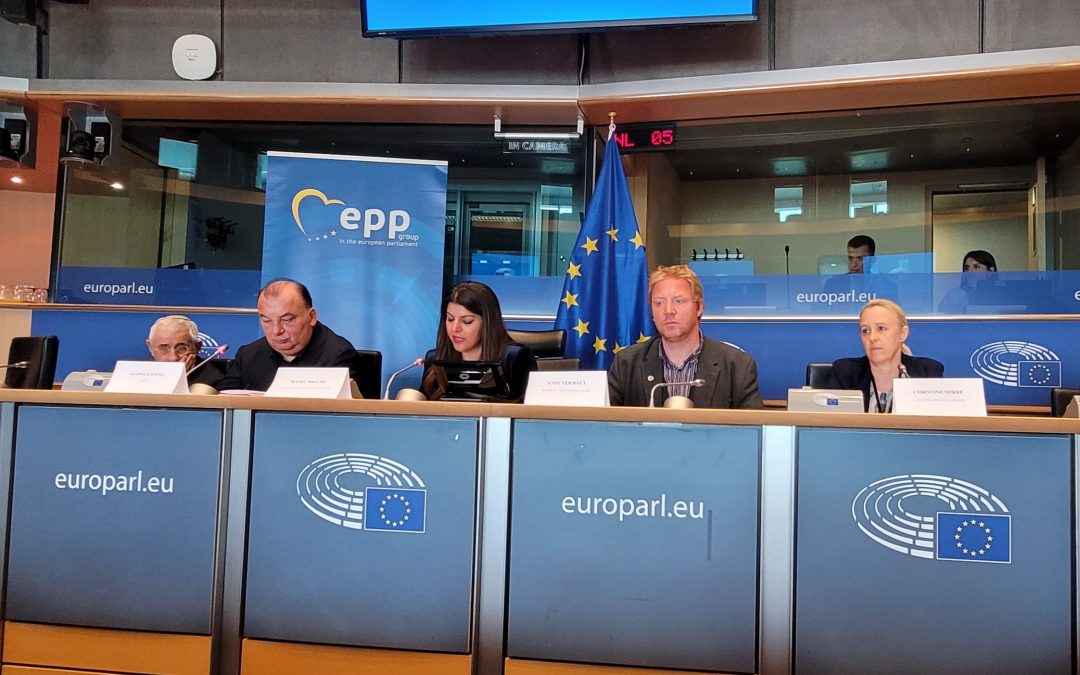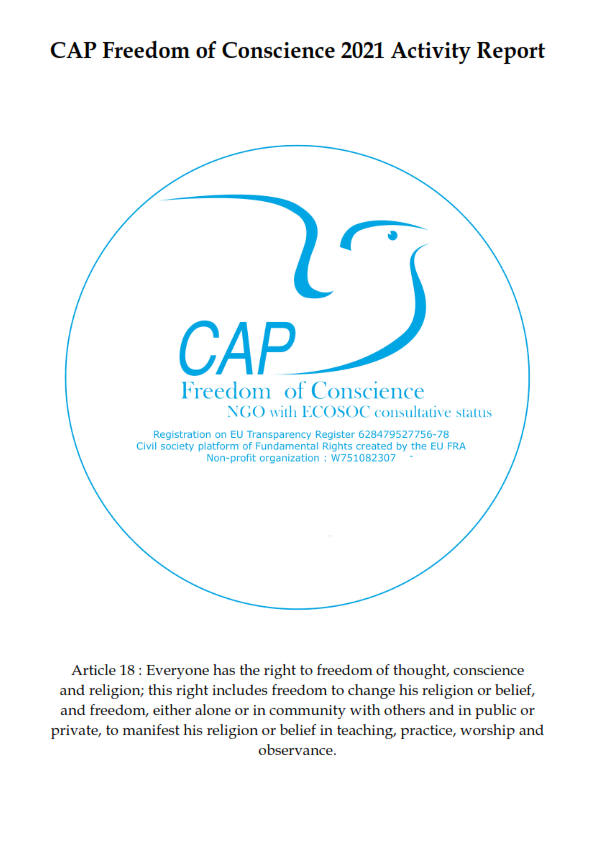By Christine Mirre and Manel Msalmi
The repression of Iranian women of Kurdish ,Arab ,Baluche ,Azeri ethnic origin.
The status of women in Iran, including those of Kurdish, Arab, Baluchi, and Azeri ethnic backgrounds, has been a subject of concern and criticism by numerous human rights organizations.
in Iran, Kurdish women, Arab women particularly in Khuzestan Province, Baluchi women, Azeri women are facing various forms of discrimination and marginalization, including limited access to education, employment opportunities, and political representation.
They have also encountered restrictions on their language and cultural rights. For instance, the Azeri language, which is widely spoken in Iran, has faced limitations in official settings, education, and media. Iranian law imposes certain restrictions on women, such as compulsory hijab and gender-based segregation in public spaces. It is important to emphasize that these issues are not unique to women of ethnic minority backgrounds in Iran. Women across the country, regardless of their ethnicity, face legal and social challenges that limit their rights and freedoms. I’d like to illustrate the situation of ethnic minority women in Iran with an emblematic case of persecution.
Mahsa Amini 22-year-old Kurdish woman, died on September 16 2022, three days after being arrested in Tehran by the Gasht-e Ershad, the regime’s morality police, which enforces strict rules on women’s dress, including the hijab. Her death sparked widespread outrage and brought international attention to the protests and the government’s response.
Mahsa Amini’s death occurred during demonstrations that erupted across Iran in response to an increase in fuel prices. The protests quickly turned into broader anti-government demonstrations, with people expressing grievances over economic hardship, political repression, and human rights abuses. The Iranian government responded to the protests with a heavy-handed crackdown, including the use of violence by security forces.
During one of the protests in Tehran, Mahsa Amini was reportedly participating, and she was allegedly hit in the head by a tear gas canister fired by security forces. She was seriously injured and later died in the hospital. Her death became a symbol of the government’s excessive use of force against protesters and drew international attention to the situation in Iran.
The death of Mahsa Amini shocked the world and highlighted a characteristic of the regime, namely ethnic and sexist discrimination.
The body of Atef Nami, an Iranian-Arab activist from the town of Karaj near Tehran, was found on the balcony of his home after being arrested by security forces for taking part in the protests.
The country is all too familiar with the phenomenon of unexplained deaths after arrests in Iran, but the minority rights activist brother said the news was still shocking.
“I was completely shocked and devastated when I heard from my family that my sister had been killed,” said Mohammed Amin Naami, an activist who also lives in Europe.
He reports that his family had taped a gas pipe to his mouth when they found her, making it look like a suicide attempt. However, the family rejects this version. They claim it was staged and that there were marks of torture on her body.
If Atefeh was indeed the victim of foul play, she is the latest target in a series of murders and kidnappings that have plagued residents of Iran’s Arab-majority Khouzistan province since the start of the Masa Amini protests.
Muhammad and his sister have long campaigned for the right of Iranian Arabs to learn their language in schools.
As a result, Muhammad suffered personally and apologized for preferring to speak to MEE in Persian rather than Arabic, as he didn’t understand his mother tongue very well.
Since the death of Mahsa Amini, arrested by Iran’s notorious vice police, demonstrations have taken place in several cities in the Islamic Republic, starting with Amini’s home province of Kurdistan.
Her death highlighted the oppression and marginalization of women in Iran. It also highlighted the mistreatment of the country’s non-Persian ethnic minorities, in particular the large Kurdish population, concentrated in the west of the country.
This situation highlighted the contrast between the treatment reserved for women in other regions of the Middle East where Kurds make up the majority of the local population – in northern Iraq, south-eastern Turkey and northern Syria – and where women occupy an important place in civic and military life.
On September 24,2022 a demonstration in solidarity with Iranian women was organized in front of the United Nations offices in Irbil, capital of the semi-autonomous region of Iraqi Kurdistan.
Many of the participants were Iranian Kurds living in voluntary exile in a city known for its culture of tolerance.
According to the media AFP, Kurdish opposition groups have always fought for an alternative vision of society.
Carrying placards with Amini’s face, demonstrators chanted “women, life, freedom” and “death to the dictator”, in reference to Iran’s Supreme Leader, Ayatollah Ali Khamenei.
“They killed (Amini) because of a hair sticking out of her hijab. Young people are asking for freedom. They are asking for rights for everyone because everyone has the right to dignity and freedom,” one protester, Namam Ismaili, an Iranian Kurd from Sardasht, a Kurdish town in northwest Iran, told Reuters.
“We are not against religion, nor against Islam. We are secular and we want religion to be separated from politics,” Maysoon Majidi, an Iranian Kurdish actor and director living in Irbil, told the news agency.
Masoud Barzani, president of Iraqi Kurdistan’s ruling party, the Kurdistan Democratic Party, called Amini’s family to offer his condolences and express his hope that justice would be done.
Kurdish political identity throughout the region and within the community’s large European diaspora embraces secular, nationalist and even socialist traditions.
In the case of Iran’s Kurds, this often puts them at odds with the country’s theocratic regime.
On September 23, the Kurdish-majority town of Oshnavieh in Iran’s West Azerbaijan province briefly fell to protesters, who set fire to government offices, banks and a base belonging to the regime’s Islamic Revolutionary Guard Corps.
In response, the IRGC bombed the offices of Iranian Kurdish opposition groups based in Sidakan, Iraq, accusing Kurdish parties of inciting “chaos”.
The Tasnim news agency, which is affiliated to the IRGC, said the bombing targeted the offices of Komala and the Iranian Kurdistan Democratic Party, which had reportedly sent “armed teams and a large quantity of weapons […] to the country’s border towns to sow chaos”.
The KDPI is a Kurdish opposition party that has waged an intermittent armed campaign against the regime since the Islamic revolution. Komala, meanwhile, is a left-wing Kurdish armed opposition party fighting for Kurdish rights in Iran.
Although the Iranian constitution grants ethnic minorities equal rights, allowing them to use their own language and practice their own traditions, Kurds, Ahwazi Arabs, Baluchis and other groups claim that they are treated as second-class citizens, their resources exploited, their towns starved of investment and their communities subjected to aggressive police surveillance.
Kurdish opposition groups in Iran have been fighting for decades for greater political and cultural rights for their communities, which are spread across a part of the country known to Kurds as Rojhelat – or Eastern Kurdistan.
This nationalist spirit has often meant that women’s emancipation has been seen as a secondary concern to the overall struggle for the Kurdish nation, particularly in the case of Iraqi Kurdish leaders, who have long drawn their support from traditional tribal structures.
Elsewhere in the region, however, Kurdish opposition groups have always fought for a different vision of society, based on democratic values and the equal status of women.
It is worth noting that the situation for women in Iran is complex, and there are also many Iranian women who actively challenge and work towards improving their rights and status within the country.
As a human rights activist and as a woman, I strongly believe that it is the duty of all of us who live in regions where women’s rights are respected, to support and plead the cause of these Iranian women so that they can enjoy the fundamental rights to which they are naturally entitled per the first article of the universal declaration of human rights that I would like to repeat here: All human beings are born free and equal in dignity and rights, and everyone is entitled to all the rights and freedoms set forth in this Declaration, without distinction of any kind, such as race, color, sex, language, religion, political or other opinion, national or social origin, property, birth, or other status.



